You are viewing ARCHIVED content published online before January 20, 2025. Please note that this content is NOT UPDATED, and links may not work. Additionally, any previously issued diversity, equity, inclusion or gender-related guidance on this webpage should be considered rescinded. For current information, visit https://www.blm.gov/blog.
Anchorage Youth say "no" to screens, but "YEP!" to trails
Teenagers take to BLM’s Campbell Tract to labor.
“I’m not an environmentalist or anything,” Jonathon Woolley said while snipping thick wire in the rain, “I want to be an ecologist or fish biologist. I can’t get into the politics of being an environmentalist.”
But Woolley, and 30 of his peers, did get into a summer job with Anchorage Park Association’s Youth Employment in Parks (YEP) Program to learn natural resource management job skills.
The 16 to 19-year-olds have been cutting brush, digging tread, clipping invasive species and removing decrepit fences in the green space around Anchorage through rain, shine and an incessant mosquito whine. They’re working 37.5 hours a week including an education and certification day every Friday.
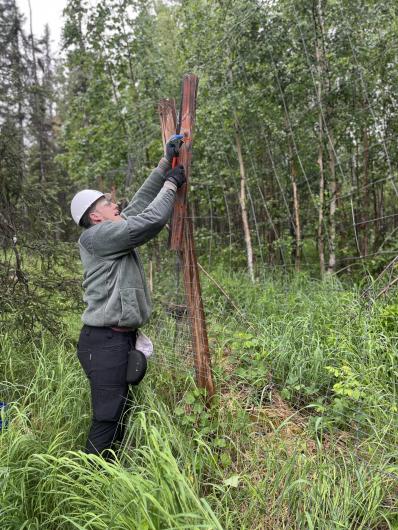
Woolley muted his portable Bluetooth speaker to share a little more about his goals. He wants to do his part for the country, so he’s headed to Alaska Pacific University to study fisheries with the hopes of becoming an “oligist.” He owns seven aquariums and ultimately wants to retire and open his own fish store somewhere in Alaska. But for now, he’s rolling up another segment of a 10-foot wildlife exclosure, an area that prevents unwanted animals, that the Bureau of Land Management wanted removed from Campbell Tract.
Before starting on the exclosure, the crew covered Campbell Tract to identify thousands of invasive Bird Cherry and then hand pulled truckloads of the woody stemmed plant for a few days.
YEP! Supervisor Alex Thornton explained the crew worked together well as they canvassed the trees, meadows and swamps into Campbell Tract looking to mark invasive plants for future contractors.
The labor, bugs, terrain and weather set the group up to learn about adversity. “Some workers have built a cabin with their dad,” said Thornton, “and some have never swung a hammer.” Thornton also mentioned the crew worked together well as they canvassed the trees, meadows and swamps into Campbell Tract looking to mark invasive plants for future contractors.
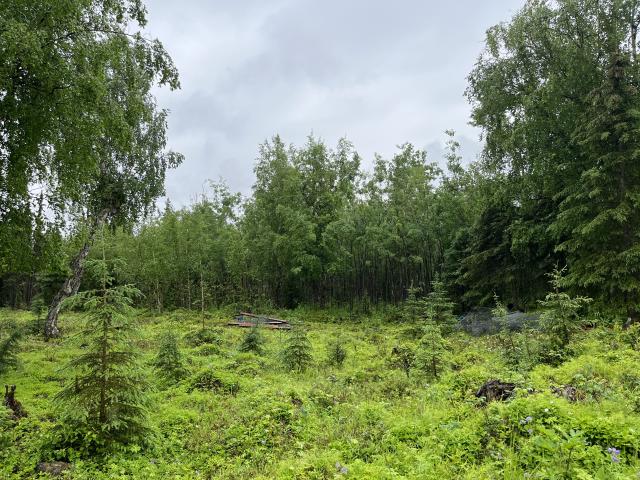
BLM Alaska Outdoor Recreation Planner Stolf Short has worked with the YEP crew for the past three years and says he looks forward to it every time. YEP cleared the alders that blocked the public from getting a clear view of the Iditarod’s ceremonial starting place. They also hauled truckloads of gravel to harden trails throughout the tract.
“The gravel work was grueling,” said Short, “they did it for two weeks, after doing gravel work for four weeks in another part of the city. To see someone pushing a wheelbarrow with a smile on their face is enjoyable to be around.”
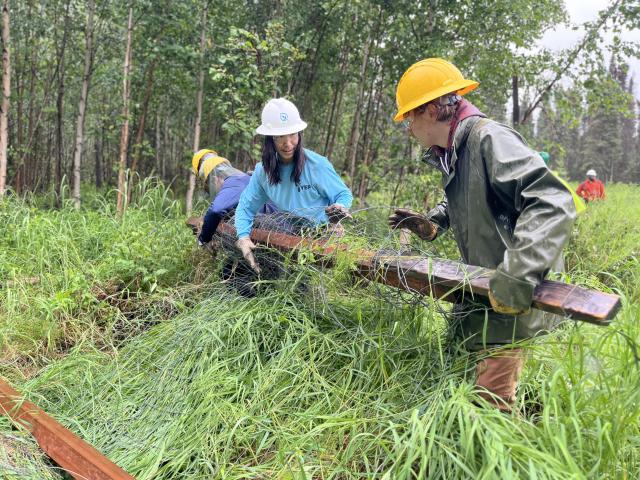
“I’m a super senior,” said Karol Eggerman, “The money is good, I like the rain, but the mosquitoes are annoying.” So far, Eggerman’s favorite task was picking Bird Cherry from the land. It’s Eggerman’s first year, so she’s making $11.79 an hour and hoping to save $3,000 this summer.
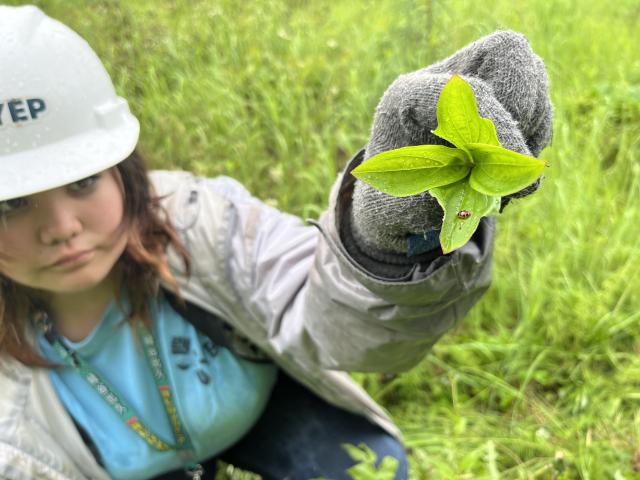
As with any field crew enduring the weather and bugs, some motivation to see through the rest of the day came from hypothetical scenarios, and a returning crew member, known only as Owen, had a thought for the rest of the crew.
“Think about this, if you leave the wire on the tree and in 50 years there’s a war where someone parachutes in here and scratches themselves on the wire and gets an infection and dies, but if you pull the wire, he would’ve been the president of Madagascar. Pulling the wire will save his life.” Some of the kids rolled their eyes, while others tried to one-up his scenario.
Mosquitos bit while the rain continued, yet the wire kept coming down. The crew worked up a rhythm, two people snipped, and three people pulled and rolled posts and wire and handed it to two people who hauled it off and stacked it. Roll after roll.
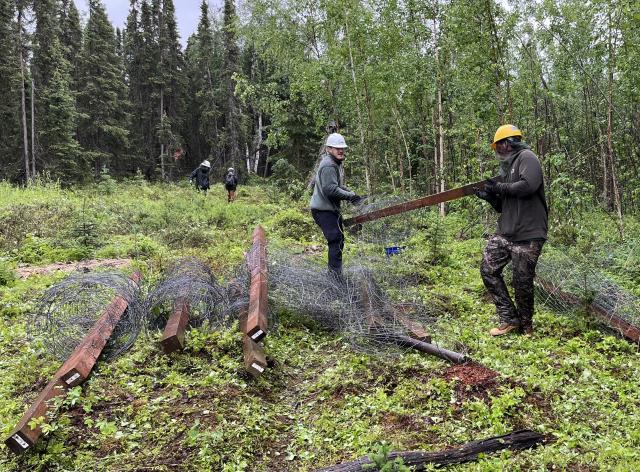
The hours went by and suddenly it was quitting time. The workers each grabbed a tool and some of the fence to haul them a quarter-mile back to the truck. Nothing was left behind and the kids were all smiles on the way out.
The BLM has worked with YEP for the past six years and is excited to have them back in the summer of 2024. If you know any teenager who is interested in working in outdoor recreation have them apply by the end of February 2024 through the Municipality of Anchorage website.
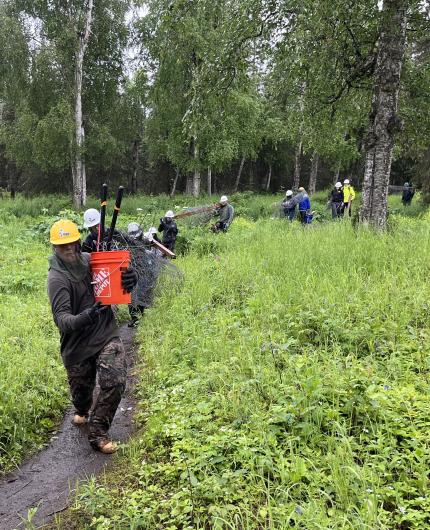
Charlie Ebbers, Public Affairs Specialist
Related Stories
- BLM Recreation Sites Available to All: Exploring Accessibility on Alaska’s Public Lands
- A boatload of recreational opportunities
- Exploring the Campbell Tract Special Recreation Management Area: Flora, fauna, and volunteer opportunities
- BLM Colorado, Grand Junction Field Office host recreation summit
- Far more than a few beavers
